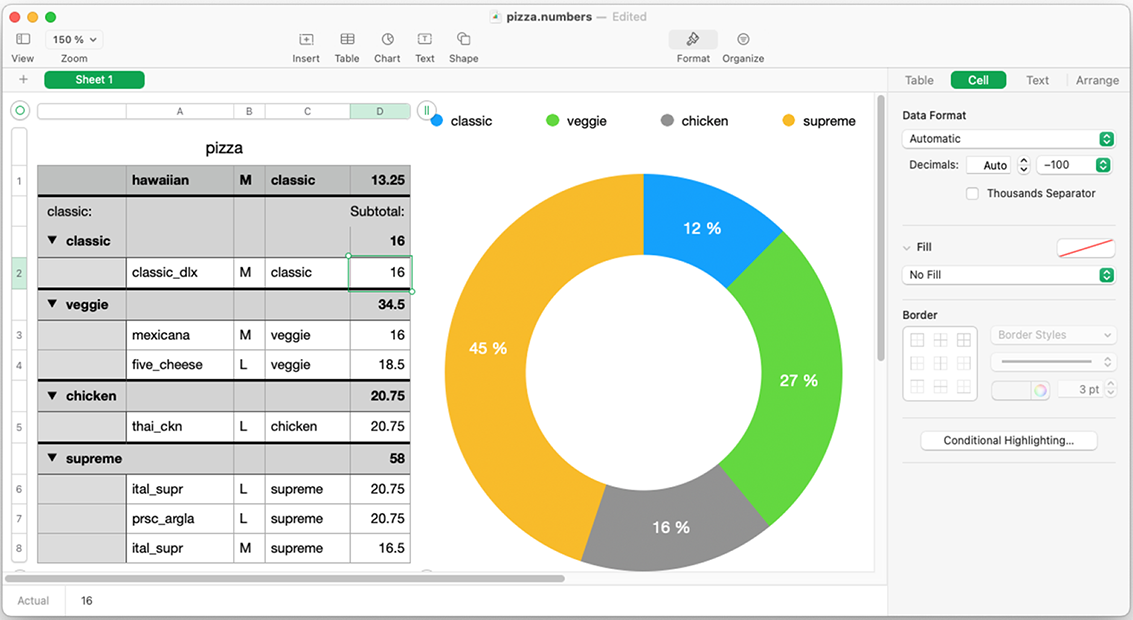chapter four
In the second chapter we discussed how to work with Julia as a calculator. However, people working with numbers today don’t usually use desk calculators; they use spreadsheet tools, such as Microsoft Excel or Apple Numbers (figure 4.1).
In these applications, numbers are stored in tables. All serious scientific work involves working with large tables of data, including whole columns of numbers. Scientists and data analysts get survey data or measurements they want to analyze. Julia is excellent for this type of work. You are not literally working with a graphical spreadsheet tool, but you are manipulating data in table form, much like a modern spreadsheet application.
